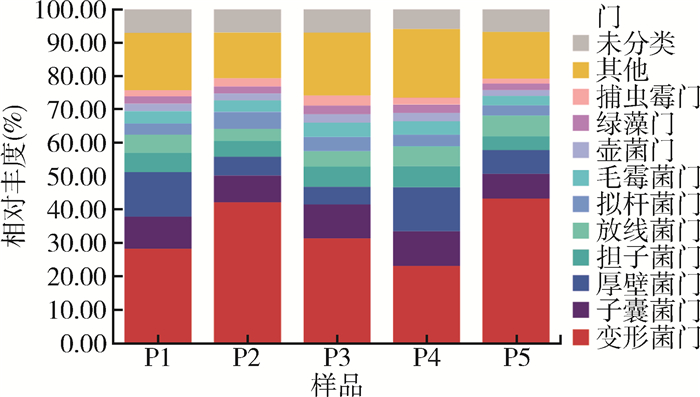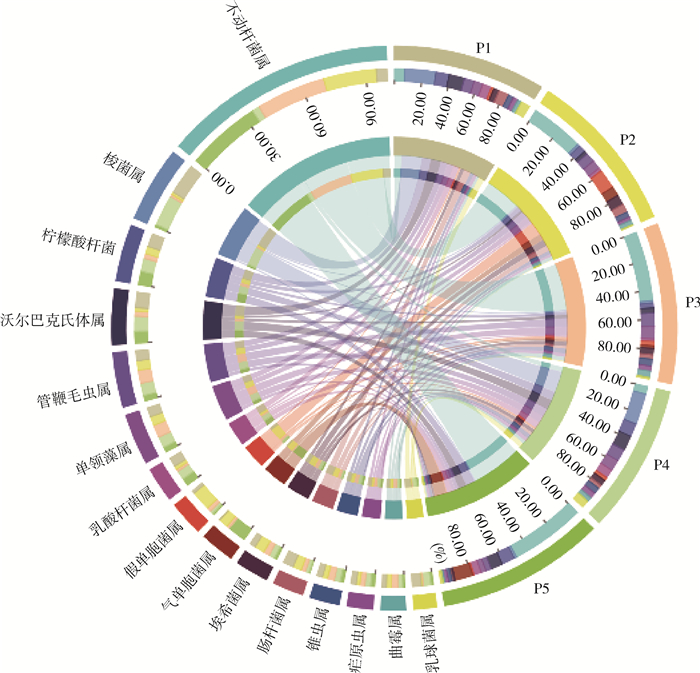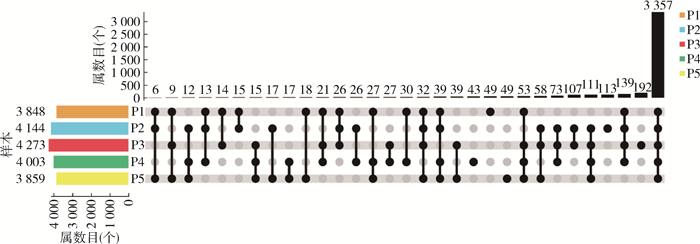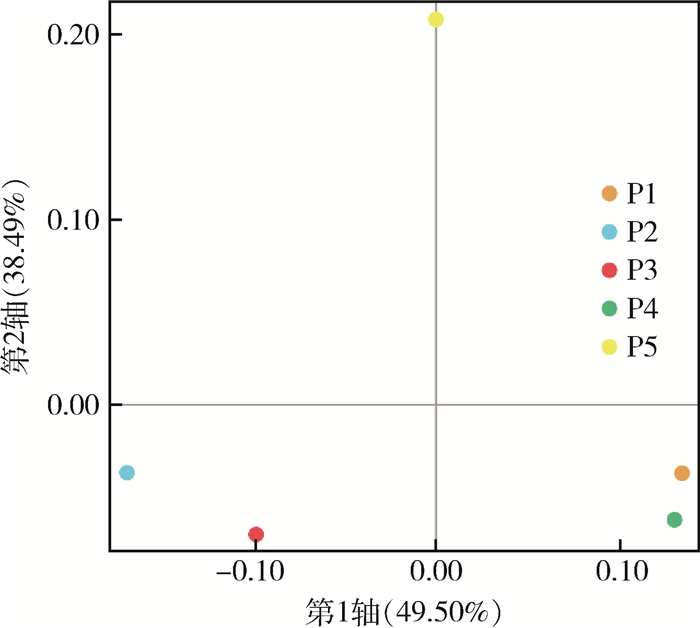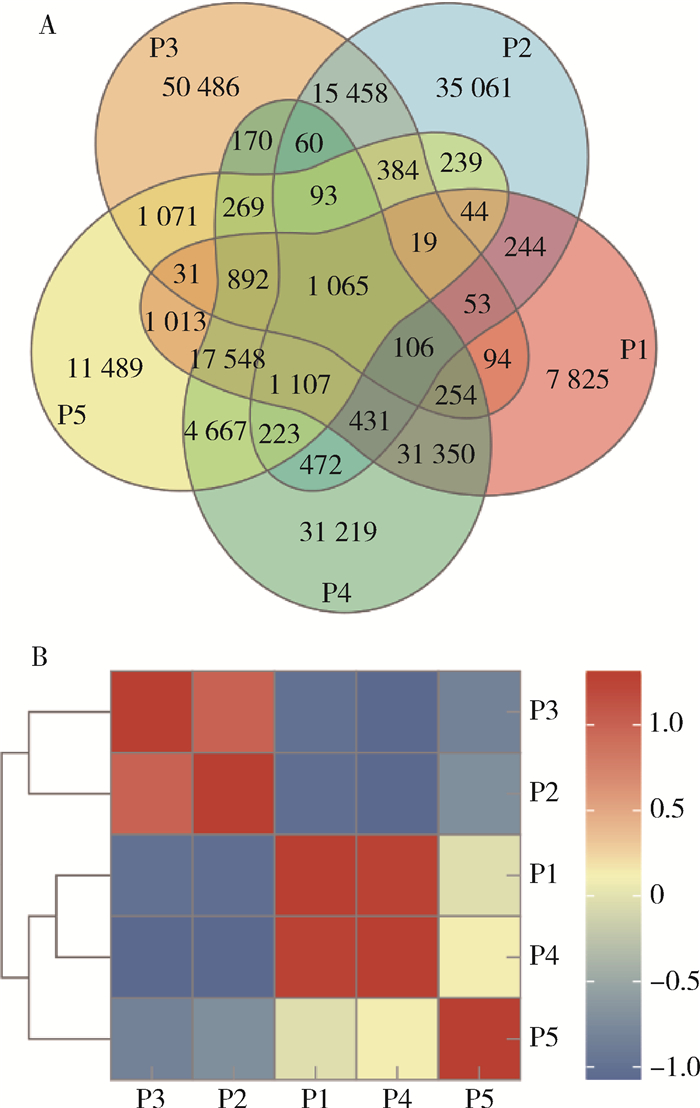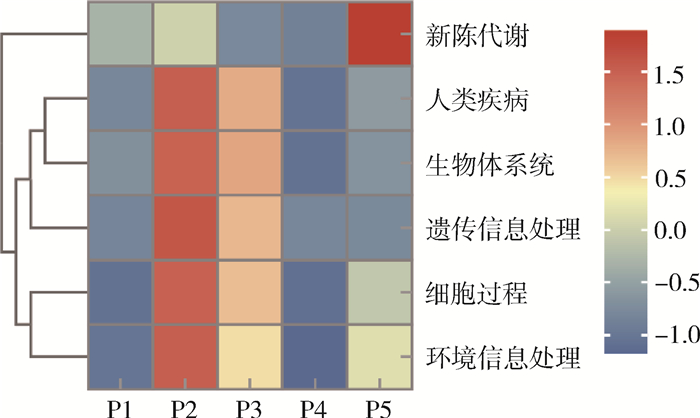| 1 |
Borkent A, Dominiak P. Catalog of the biting midges of the world (Diptera: Ceratopogonidae)[J]. Zootaxa, 2020, 4787 (1):1-377.
DOI
|
| 2 |
霍坚, 高永利, 郑龙, 等. 土拉弗朗西斯菌病的特征与防治[J]. 中华卫生杀虫药械, 2021, 27 (2):182-186.
DOI
|
|
Huo J, Gao YL, Zheng L, et al. Research progress of characteristics, prevention and treatment on tularemia[J]. Chin J Hyg Insect Equip, 2021, 27 (2):182-186.
DOI
|
| 3 |
Yu CY, Wang JS, Yeh CC. Culicoides arakawae (Diptera: Ceratopogonidae) population succession in relation to leucocytozoonosis prevalence on a chicken farm in Taiwan[J]. Vet Parasitol, 2000, 93 (2):113-120.
DOI
|
| 4 |
Duan YL, Li L, Bellis G, et al. Detection of Bluetongue virus in Culicoides spp. in southern Yunnan province, China[J]. Parasit Vectors, 2021, 14 (1):68.
DOI
|
| 5 |
Ségard A, Gardès L, Jacquier E, et al. Schmallenberg virus in Culicoides Latreille (Diptera: Ceratopogonidae) populations in France during 2011-2012 outbreak[J]. Transbound Emerg Dis, 2018, 65 (1):e94-e103.
DOI
|
| 6 |
Mcgregor BL, Shults PT, Mcdermott EG. A review of the vector status of North American Culicoides (Diptera: Ceratopogonidae) for Bluetongue virus, Epizootic hemorrhagic disease virus, and other arboviruses of concern[J]. Curr Trop Med Rep, 2022, 9 (4):130-139.
DOI
|
| 7 |
刘国平, 孙定炜, 范娜, 等. 海南省5市县禽畜厩舍吸血蠓调查[J]. 中国热带医学, 2020, 20 (5):413-416, 428.
DOI
|
|
Liu GP, Sun DW, Fan N, et al. Hematophagous midges at the hencoop and livestock sheds in five counties of Hainan[J]. China Trop Med, 2020, 20 (5):413-416, 428.
DOI
|
| 8 |
叶雅芳, 刘德星, 李婷婷, 等. 广东省中山市库蠓形态与分子鉴定[J]. 中国人兽共患病学报, 2019, 35 (11):1021-1028.
DOI
|
|
Ye YF, Liu DX, Li TT, et al. Morphological and molecular identification of Culicoides collected in Zhongshan, Guangdong, China[J]. Chin J Zoonoses, 2019, 35 (11):1021-1028.
DOI
|
| 9 |
刘帅, 加帕尔·哈斯木, 薛新梅, 等. 新疆库蠓源性盖塔病毒的分离与鉴定[J]. 畜牧兽医学报, 2017, 48 (10):1998-2004.
DOI
|
|
Liu S, Jiapaer HSM, Xue XM, et al. Isolation and identification of Getah virus from Culicoides in Xinjiang[J]. Acta Veterin Zootechn Sin, 2017, 48 (10):1998-2004.
DOI
|
| 10 |
Duan YL, Yang ZX, Bellis G, et al. Isolation of Tibet orbivirus from Culicoides jacobsoni (Diptera, Ceratopogonidae) in China[J]. Parasit Vectors, 2021, 14 (1):432.
DOI
|
| 11 |
Storelli G, Defaye A, Erkosar B, et al. Lactobacillus plantarum promotes Drosophila systemic growth by modulating hormonal signals through TOR-dependent nutrient sensing[J]. Cell Metab, 2011, 14 (3):403-414.
DOI
|
| 12 |
Cirstea MS, Yu AC, Golz E, et al. Microbiota composition and metabolism are associated with gut function in Parkinson's disease[J]. Mov Disord, 2020, 35 (7):1208-1217.
DOI
|
| 13 |
周洪英, 孙波, 吴洪丽, 等. 昆虫肠道微生物功能及家蚕肠道微生物研究进展[J]. 北方蚕业, 2015, 36 (4):1-4, 33.
DOI
|
|
Zhou HY, Sun B, Wu HL, et al. Research progress on function of insects gut microbiota and the microbial of Bombyx mori[J]. North Sericult, 2015, 36 (4):1-4, 33.
DOI
|
| 14 |
索鹏辉, 符修昊, 安丽萍, 等. 海南省儋州市旱季致倦库蚊肠道细菌多样性研究[J]. 中国热带医学, 2022, 22 (1):20-25.
DOI
|
|
Suo PH, Fu XH, An LP, et al. The diversity of midgut bacteria of Culex quinquefasciatus in the dry season in Danzhou, Hainan[J]. China Trop Med, 2022, 22 (1):20-25.
DOI
|
| 15 |
夏晓峰. 小菜蛾中肠微生物多样性及其功能研究[D]. 福州: 福建农林大学, 2014.
|
|
Xia XF. Organizational diversity and functional characterization of microbiota in the midgut of diamondback moth, Plutella xylostella (L.)[D]. Fuzhou: Fujian Agriculture and Forestry University, 2014. (in Chinese)
|
| 16 |
Pasti MB, Belli ML. Cellulolytic activity of Actinomycetes isolated from termites (Termitidae) gut[J]. FEMS Microbiol Lett, 1985, 26 (1):107-112.
DOI
|
| 17 |
Waite DW, Taylor MW. Characterizing the avian gut microbiota: Membership, driving influences, and potential function[J]. Front Microbiol, 2014, 5, 223.
DOI
|
| 18 |
Klement RJ, Pazienza V. Impact of different types of diet on gut microbiota profiles and cancer prevention and treatment[J]. Medicina (Kaunas), 2019, 55 (4):84.
DOI
|
| 19 |
Boyle DP, Zembower TR. Epidemiology and management of emerging drug-resistant gram-negative bacteria: Extended-spectrum β-lactamases and beyond[J]. Urol Clin North Am, 2015, 42 (4):493-505.
DOI
|
| 20 |
Boissière A, Tchioffo MT, Bachar D, et al. Midgut microbiota of the malaria mosquito vector Anopheles gambiae and interactions with Plasmodium falciparum infection[J]. PLoS Pathog, 2012, 8 (5):e1002742.
DOI
|
| 21 |
Werren JH. Biology of wolbachia[J]. Ann Rev Entomol, 1997, 42, 587-609.
DOI
|
| 22 |
Jaenike J. Spontaneous emergence of a new Wolbachia phenotype[J]. Evolution, 2007, 61 (9):2244-2252.
DOI
|
| 23 |
Sunantaraporn S, Thepparat A, Phumee A, et al. Culicoides Latreille (Diptera: Ceratopogonidae) as potential vectors for Leishmania martiniquensis and Trypanosoma sp. in northern Thailand[J]. PLoS Negl Trop Dis, 2021, 15 (12):e0010014.
DOI
|
| 24 |
Kohl KD. Diversity and function of the avian gut microbiota[J]. J Comp Physiol B, 2012, 182 (5):591-602.
DOI
|






